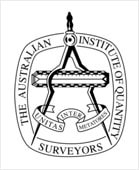Negative gearing is a property investment strategy in Australia that allows property investors to offset any rental losses they incur from an investment property against their taxable income. This means that if the expenses associated with a rental property, such as tax depreciation, mortgage interest, property management fees, and maintenance costs etc, exceed the rental income generated from the property, the investor can claim the difference as a tax deduction.
The idea behind negative gearing is to make up for the short-term losses with long-term gains. The investor hopes that the property’s value will appreciate over time, resulting in a capital gain when they sell it.
While negative gearing can be a useful strategy for some property investors, it is not without its risks. If the property’s value does not appreciate as expected, the investor may be left with a property that is worth less than what they paid for it, and a large tax bill when they sell. Additionally, negative gearing can be an expensive strategy for those who do not have sufficient income to offset the rental losses, as they may need to rely on borrowing or other forms of financing to cover the costs of their investment.
Despite its risks, negative gearing remains a popular strategy in Australia due to its tax benefits, and the high demand for rental properties in many parts of the country. However, it is important for potential investors to consider their own financial situation, as well as the current market conditions, before deciding whether negative gearing is the right strategy for them.
In conclusion, negative gearing is a property investment strategy in Australia that allows property investors to offset rental losses against their taxable income, with the hope of making up for short-term losses with long-term gains. It can work well in a booming real estate market but it is always better to have a cash flow positive property from day one as its less risk and you don’t need to constantly top up the losses. It you don’t have other sources of income to do this it can be very risky and not the best outcome for most people.




